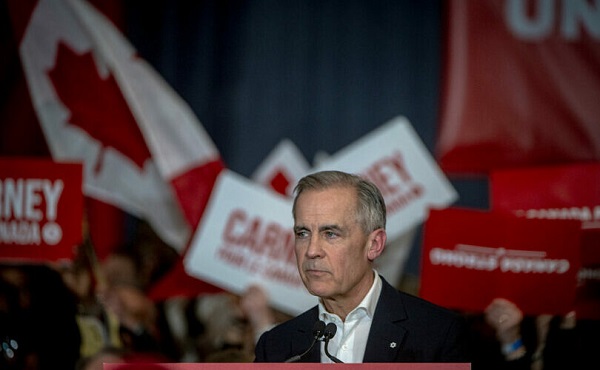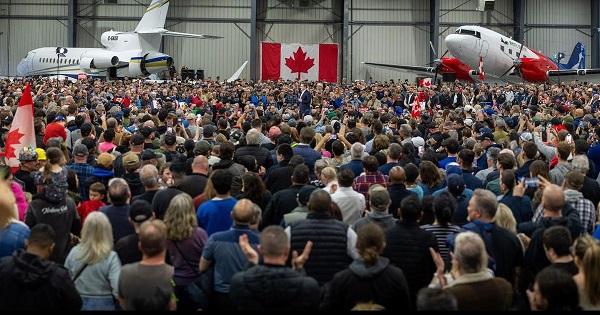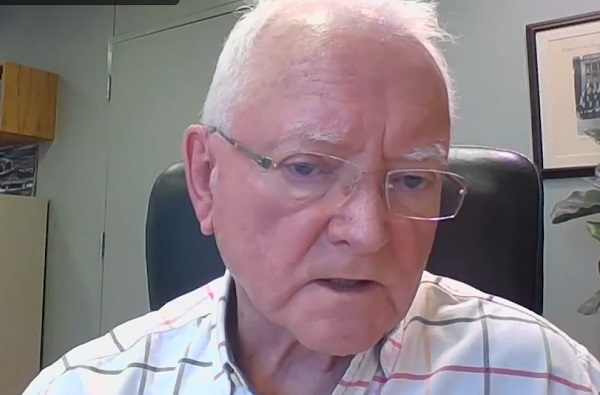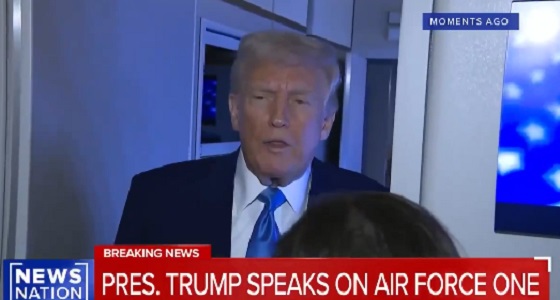Opinion
Red Deer holds the dubious title of having the poorest ambient air quality. The province has some ideas on that.

Our air quality in Red Deer has been very poor for years and I always felt that every level of government left it for the other levels of government to find a cure.
Our provincial government has taken steps since forming government in 2015. Some were expensive yet effective like reducing our dependency on coal. Some steps were eye ball rolling steps like doing more studies.
Our municipal government is taking steps and are talking about taking more steps. Let us hope that it finds the planning department and we can make the appropriate changes that I believe is necessary. For starters do we need all 5 high schools built and planned for, along 30 avenue and no high schools north of the river where 30% of the population resides? Would it mean a lot less commuting for 30% of the students if did not have to commute across the city to go to school and participate in extra-curricular activities? Just asking.
Studies are influenced by interpreters and interpretations, adding to or subtracting from parameters and by time lines. Different elements like SO2 or NOX if added or removed from comparables will affect the interpretations. In any interpretation we still have poor air. Possibly the worst air in Canada on average. Of course downtown Calgary, Toronto, or Edmonton may peak during rush hour traffic but overall we hold the title of worst ambient air quality.
So to recap. Let us go back to a story on CBC News.
Alberta is hoping to relieve Red Deer of a less than prestigious title. The central Alberta city, for years, has had the worst ambient air quality in the province. (CBC NEWS September 2015)
A report in September confirmed what many in the region already believed.
Industrial activity and vehicle emissions had pushed Red Deer’s ozone and fine particulate matter levels above national standards going back to 2009.
The province’s action plan, heavily based on its previously-announced plan to eliminate coal pollution by 2030, was introduced Thursday.
In a statement, Noah Farber of the Asthma Society of Canada said a reduction in coal pollution is a step in the right direction.
“The Alberta government’s commitment to the elimination of coal fired electricity generation is a positive step to improving air quality for all Albertans. This is particularly true for those with asthma and other respiratory diseases, who will now be able to breathe well and live healthy active lives,” Farber said.
The province is giving the Parkland Airshed Management Zone a grant of $250,000 to identify and monitor sources of pollution.
Another $560,000 will help a new air monitoring station in Red Deer provide more detailed identification of pollution sources for the region.
The Alberta Motor Association will continue driver education with an aim of reducing practices like idling, that increase emissions.
Red Deer outlined a series of actions the city was taking to address the issue following the September report, including buying 30 per cent of its energy from green sources and expanded public transit options, among others.
(CBC NEWS)
Alberta Environment Minister Shannon Phillips says the province is on track to have the worst air quality in Canada, and vows the government will put measures in place to reduce emissions from industry and vehicles.
“The time to act is long overdue,” Phillips said.
“We have a responsibility to do everything we can to protect the health of Albertans.”
Phillips made the remarks after seeing the results of the Canadian Ambient Air Quality Standards report, which show the Red Deer region has exceeded national standards. Four other regions — Lower Athabasca, Upper Athabasca, North Saskatchewan and South Saskatchewan — are close to exceeding national standards.
Phillips said there is no immediate health risk for people living in central Alberta.
“These results are concerning,” Phillips said in a news release. “We can’t keep going down the same path and expecting a different result. Our government has a responsibility to protect the health of Albertans by ensuring air pollution from all sources is addressed.”
The province will initiate an “action plan” to deal with poor air quality in the Red Deer area, a move she said is required under the Canadian Ambient Air Quality Standards.
The government said a scientific study looking into the cause of the air pollutants is currently underway, and people living in the Red Deer area, industry stakeholders and the provincial energy regulator will be consulted. That plan is expected to be complete by the end of September and will take Red Deer’s geography and air patterns into consideration.
As part of the plan, Phillips said the government will:
Review technology that could be used to reduce emissions.
Review whether polluters in Alberta are meeting national standards.
Look at other ways to reduce emissions, for example, ways to curb vehicle emissions.
The Pembina Institute, non-profit think tank focused on clean energy, was quick to follow up with its own statement about the air quality results, saying the report shows the need for a provincewide pollution reduction strategy.
“This new report adds to the mounting evidence that Alberta needs to reduce air pollution across the province. Measures that will produce more rapid results are also needed in the numerous regional hot spots identified by the report,” said Chris Severson-Baker, Alberta’s regional director at the Pembina Institute.
“The report shows that, unless emissions are cut, most of the province risks exceeding the Canadian Ambient Air Quality Standards for fine particulate matter. This places an unacceptable burden on people’s health and on the environment,” he said.
The Canadian Association of Physicians for the Environment has also weighed in on the report, saying it is “dismayed, but not surprised” by the findings.
“This calls into question the pervasive belief that the clear blue skies of Alberta foster clean air, safe from the pollutants better known from smoggier climes,” said Dr. Joe Vipond, an emergency room doctor and member of the association.
Phillips blamed the previous Tory government for contributing to the rising pollution levels, saying the PCs resisted meaningful action on climate change.
Canadian Ambient Air Quality Standards are national standards for particulate matter and ozone exposure.
I received this e-mail this past week from the Director of Air Policy for the Government of Alberta. The Premier did not toss my concerns into the wastebasket but forwarded it to someone who can actually answer some questions. Spoiler alert, there will be some eye-ball rolling.
My name is Hamid Namsechi and I am the director of Air Policy for the Government of Alberta. Premier Notley forwarded a copy of your letter regarding your concerns about air quality and the need for action to reduce air pollution in Red Deer.
The Government of Alberta takes the health of Albertans very seriously. There are many agencies both inside and outside government that look after protecting the quality of our environment. For example, while the Departments of Health and Environment and Parks are responsible for human and environmental health policies and outcomes, agencies such as Alberta Energy Regulator, Clean Air Strategic Alliance, Alberta’s ten airshed organizations, Alberta municipalities, etc. all work collaboratively to ensure the quality of air in Alberta meets all provincial and national standards.
As for action on emissions, you will be happy to know that significant progress has been made since the 2011-2013 Red Deer air quality assessment report was released in September 2015. For starters, part of taking action on reducing fine particulate matter in Red Deer is improving the state of knowledge. Until 2014, Red Deer Riverside was the only monitoring station in the Red Deer area. The Red Deer Lancaster monitoring station was added as a second air quality monitoring station in late 2014. This station will help us to understand if fine particulate matter concentrations vary in different parts of the City of Red Deer.
In April 2016, the Government announced funding for two significant studies to take place in Red Deer. One study involved air quality modelling to determine the relative impact of various sectors on the air quality in Central Alberta. The other is a long-term monitoring study which has commenced sampling and will continue to sample fine particulate matter at three locations in and around the City of Red Deer. These studies will provide valuable information regarding likely sources of emissions that are contributing to the issue of high fine particulate matter concentrations in the City of Red Deer.
Direct action has been taken to reduce emissions from the coal-fired electricity generation at the Battle River site – the biggest source of air pollution in the Red Deer region. As you are aware, coal plants produce a number of air pollutants when they burn coal to make steam to generate electricity. During combustion in air, the sulphur dioxide (SO2), various nitrogen oxides (NOx), mercury (Hg), primary particulate matter (PM) and a number of other emissions such as heavy metals are produced as by-products. The operating permit of the Battle River units has now been revised and recent records show that emissions are down by over eighty percent from pre-2015 levels.
Similarly, all industrial approvals for other facilities in the Red Deer region are currently being systematically looked at for opportunities to reduce emissions. After Minister Phillips news conference in 2015, industrial approvals staff in both Alberta Environment and Parks as well as the Alberta Energy Regulator have stepped up the stringency of the emissions standards for facilities operating in stressed airsheds.
As for reducing the volume of non-industrial emissions, there has also been a lot of progress since 2015. Alberta Government has been working with the Clean Air Strategic Alliance, federal Government, Alberta municipalities, agricultural sector, industry and environmental non-governmental organizations to develop strategies to reduce the cumulative impacts of emissions from the many small sources (such as transportation).
The good news in all of these from the ambient air quality perspective is that Red Deer’s latest fine particulate matter readings have substantially improved since the Minister’s news conference. Our preliminary assessment of the 2016 annual average for PM2.5 at Riverside Station shows a forty six percent reduction compared to the historical high levels, which puts the current air quality in Red Deer in the yellow range.
Thank you for taking the time to share your concerns with the Government of Alberta.
Sincerely,
Hamid Namsechi, P.Eng.
Air Policy Director
Policy & Planning Division
Environment and Parks
So we have seen some improvements, will it be enough? Is it just another interpretation?
2025 Federal Election
Mark Carney pledges another $150 million for CBC ahead of federal election

From LifeSiteNews
Prime Minister Mark Carney has promised $150 million in additional funding to the Canadian Broadcasting Corporation (CBC) on top of its current $1.4 billion annual government handout.
During an April 4 press conference in Montreal, newly elected and campaigning Prime Minister Mark Carney pledged an additional $150 million in funding to the CBC ahead of the April 28 federal election.
“We will give it the resources it needs to fulfill its renewed mission and ensure that its future is guided by all Canadians and not subject to the whims of a small group of people led by ideology,” Carney said.
“Our plan will safeguard a reliable Canadian public square in a sea of misinformation and disinformation, so we can stay informed and tell our own stories in our own languages,” he continued.
The 150 million taxpayer dollars are in addition to the outlet’s $1.4 billion annual government subsidy.
Following Carney’s announcement, CBC spokesman Eric Wright promised that “during the election period we do not have any comment on the parties’ positions on CBC.”
Notably, the proposed funding increase is being announced just weeks before Canadians head to the polls to elect a new prime minister, leading some to speculate that it is an attempt to encourage the CBC to report favorably on the Liberal Party, especially considering Conservative Party leader Pierre Poilievre has long been campaigning to defund the CBC, often accusing it of having a left-wing bias.
Indeed, there have been multiple instances of the CBC pushing what appears to be ideological content, including the creation of pro-LGBT material for kids, tacitly endorsing the gender mutilation of children, promoting euthanasia, and even seeming to justify the burning of mostly Catholic churches throughout the country.
Accusations that government-funding of the CBC leads to it having a bias were further inflamed last September when then-Liberal House leader Karina Gould directed mainstream media reporters to “scrutinize” Poilievre.
Gould’s comments were in reference to Poilievre’s promise to defund the CBC if elected prime minister.
2025 Federal Election
I don’t believe these polls!

 Dan McTeague
Dan McTeague
Cards on the table, I’m skeptical of the current state of the polling in this election. My sense is that Mark Carney and the Liberals’ numbers are, at least in part, a byproduct of sympathetic pollsters over-sampling their key demographics, and those being trumpeted to high heaven by the publicly-funded media. That, coupled with voters’ justifiable annoyance at Donald Trump’s “51st State” cracks and tariff threats, has contributed to an illusion of enthusiasm, a sense that they are running away with this thing.
That said, one polling data point has struck me as being both real and important. A recent Abacus Data poll showed that, when you cut out all the distractions, Canadians’ biggest concern remains our inflated cost of living. And that is an issue which clearly favors Poilievre and the Conservatives.
That’s because the dire state of our economy can largely be laid at the feet of the Liberals, who’ve been running the show for the past decade. Yes, they’ve made a change at the top, but not much of one. On top of being a globe-trotting member of the “Green” Elite, and champion of environmentalist banking, Mark Carney was a Liberal advisor for years, a key part of the Trudeau “brain trust” — trust me, I use that term loosely — that cooked up a whole raft of economy smothering “Green” policies which have done nothing to reduce global carbon emissions, but have succeeded in lightening our wallets.
Under Trudeau, our annual GDP growth noticeably shifted from the 3% range towards the end of the Harper years to the 1% range more recently. Household debt-to-income ratios rose steadily in the same period, while real household spending per capita dropped 2-3% below 2019 levels by 2024, as costs and interest rates went up. Disposable income growth has been outpaced by inflation and taxes, and bankruptcy filings have risen 40% since just 2019.
Canadian food prices have exploded by 35-40%, with family spending up over 50% over the past decade. Consequently, food insecurity rose to 23% by 2023, from around 8% in 2015, and Food Banks Canada has reported a 78% surge in usage from 2019 to 2023.
Meanwhile, Canada’s national debt, which was just over $600 billion when Justin Trudeau was handed the federal credit card, has roughly doubled, reaching over $1.2 trillion by the time he left. And provincial debt has risen by about $1 trillion in the same period.
It’s a frightening financial snapshot. And many of these negatives can be attributed to the Liberals’ war on oil and gas, which remains — however much Carney might wish otherwise — the backbone of our national economy.
So much of the Liberals’ time and effort in government has been spent kneecapping the resource sector, and for purely ideological reasons. From Bill C-48, the Oil Tanker Moratorium Act of 2019, which significantly reduces our ability to sell oil and gas abroad, to Bill C-69, which added mountains of red tape for infrastructure projects, so much so that it was nicknamed the “No More Pipelines” Act.
You’ll remember that the Supreme Court ruled the “No More Pipelines” act largely unconstitutional two years ago. Even so, Carney recently said he has no intention of repealing it, prompting Poilievre to tweet out, “This Liberal law blocked BILLIONS of dollars of investment in oil & gas projects, pipelines, LNG plants, mines, and so much more,” with an excellent infographic attached, listing the various cancelled energy projects throughout Canada since the Liberals came to power.
And then of course, there’s the Consumer Carbon Tax, which started out at $20 per tonne of CO2 emitted in 2019, small enough that many Canadians barely noticed they were paying it, but increased every year until it hit $80 per tonne.
By that point it became so noticeable and unpopular that the Liberals felt they had no choice but to “cancel” it (“zero it out” is more accurate), before it could reach the $170 by 2030 which they’d planned. Still, it remains on the books, ready to be raised again, without a vote, if Carney so chooses.
Even if he doesn’t, Carney has doubled down on the Industrial Carbon Tax. While the Liberals claim this is an improvement because it isn’t paid by working Canadians, only by big evil “polluters.” Of course, they said something similar about the Consumer Tax, that by some financial wizardry, we regular folks would get back more than we paid in, which turned out to be total bunk.
Meanwhile, the Industrial Tax makes our lives more expensive in essentially the same way as the Consumer Tax. It raises the cost of doing business, of heating our homes, of filling up our car, of our grocery bills. It just does so by a less direct route, by taxing businesses instead of individuals, so that we pay when the price of goods and services goes up in response.
The Industrial Carbon Tax, much like Trudeau’s Clean Fuel Regulations, is ultimately a hidden tax, and that suits Carney just fine. He’d prefer that we not know who to blame as our cost of living skyrockets.
The Liberal Party’s economic record over since 2015 has been atrocious, and it will be no different under Mark Carney. He is complicit, and he continues to support policies which would make us poorer, like Bill S-243, the “Climate-Aligned Finance Act,” which Carney testified before the Senate in support of last year. That bill sought to make it nearly impossible for banks to invest in, or loan money to, oil and gas projects in Canada, and tried to force financial institutions to appoint board members ideologically opposed to fossil fuels.
Canada needs to change course, and soon. As things stand, it will be tough for even a good captain to navigate us through the rough seas the Liberals have steered us into over the past ten years. A few more, and with Mark Carney at the helm, might make that impossible.
Dan McTeague is President of Canadians for Affordable Energy.
Support Dan’s Work to Keep Canadian Energy Affordable!
Canadians for Affordable Energy is run by Dan McTeague, former MP and founder of Gas Wizard. We stand up and fight for more affordable energy.
-

 Podcasts2 days ago
Podcasts2 days agoTrump’s Tariffs: The US, Canada, and the rest of the world
-

 2025 Federal Election2 days ago
2025 Federal Election2 days agoMark Carney Comes to B.C. and Delivers a Masterclass in Liberal Arrogance
-

 Alberta1 day ago
Alberta1 day agoProvince introducing “Patient-Focused Funding Model” to fund acute care in Alberta
-

 2025 Federal Election1 day ago
2025 Federal Election1 day agoPoilievre to invest in recovery, cut off federal funding for opioids and defund drug dens
-

 Alberta1 day ago
Alberta1 day agoMedical regulator stops short of revoking license of Alberta doctor skeptic of COVID vaccine
-

 Business1 day ago
Business1 day agoTrump threatens additional 50% tariffs on China, urges ‘patience’
-

 Business2 days ago
Business2 days agoTrump says tariffs on China will remain until trade imbalance is corrected
-

 International1 day ago
International1 day agoUN committee urges Canada to repeal euthanasia for non-terminally ill patients





